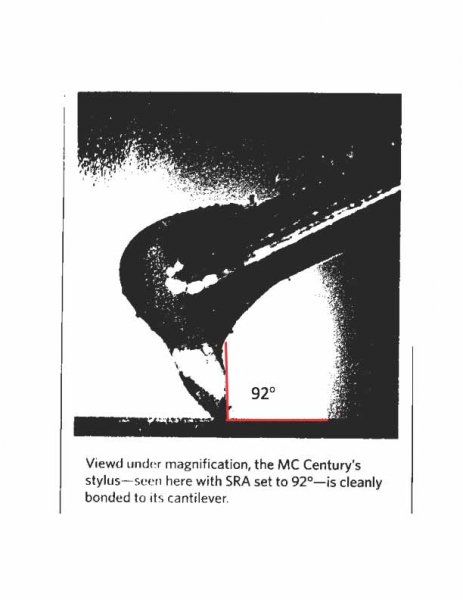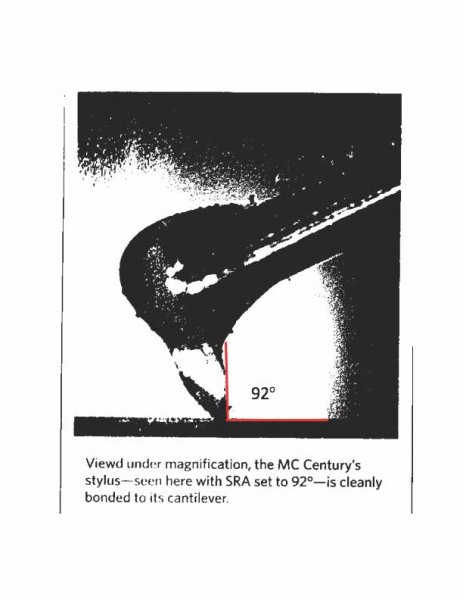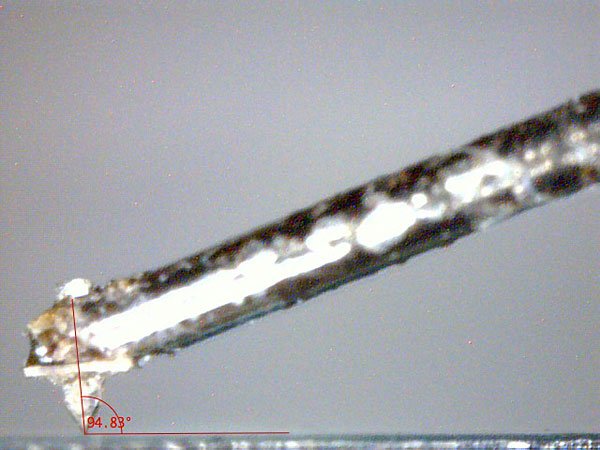Thank you for sharing what you can. And congratulations on the success of your efforts. I hope to be lucky enough to one day hear your table in a good system.
I’m sure that good system will become even better...
Cheers!
ALF
Thank you for sharing what you can. And congratulations on the success of your efforts. I hope to be lucky enough to one day hear your table in a good system.
This is what Al M. refers to as "convincing" or "believable". There is no one absolute sound, but rather a range of sounds from any particular instrument depending on how it is played, where it is played, and how it is made. Also, how it is recorded. If we listen to or "know" enough examples of this live sound, then we understand this range of sounds and whether or not what we hear from a stereo sounds real to us. Does it convince us and is the sound believable.
It is not enough to think that a violin does not sound like a cello or viola. It must sound like a violin.
Ack made an interesting comment that our Boston group has been discussing for a while. His goal is to recreate or extract the information on the recording because that is all he has. He is after a high level of resolution from his system so that he can hear what, read everything, that is on the recording. He also listens to radio broadcasts and to live performances to give him a reference, I suppose to guide him with his extensive modifications. Al and I want our systems to remind us of our memories of what we hear live while also being transparent to the recording. These are slightly different approaches, equally valid IMO, and they do guide us in our approaches. I often wonder if it is just semantics because each of us is after resolution and a sound which is convincing using live music as a reference. Other references are other systems and particular recordings. The discussion becomes circular after a while.
From what you are writing I would think that Al seeks primarily Objective 2 (master tape), while you are focused on Objective 4 (sounds live). This makes sense because you are the author of Objective 4.
Tang, that makes sense. I need to get one of David's alignment units and see how it works.
David, can you enlighten me on your 'alignment unit'?
Thx.
It's a simple easy to read tool to use in place of an actual cartridge for alignment setting, still in production for another few weeks.
david

David,
The hardest part of alignment for me is to get that darn 92 degree VTA with precision. Sure, I can get close and then adjust by ear, but do you have any advice for how to nail this exactly and unequivocably?
Marty
View attachment 43450
You need a microscope... special one. I think the ear is better once you figure out what albums to use.
David,
The hardest part of alignment for me is to get that darn 92 degree VTA with precision. Sure, I can get close and then adjust by ear, but do you have any advice for how to nail this exactly and unequivocably?
Marty
View attachment 43450
David,
The hardest part of alignment for me is to get that darn 92 degree VTA with precision. Sure, I can get close and then adjust by ear, but do you have any advice for how to nail this exactly and unequivocably?
Marty
View attachment 43450


View attachment 43477
The SRA in the above picture measured the angel between the edge the cartridge stylus and the surface of the vinyl.
It was different from the Michael Fremer 's picture which measures the angel between the center of the cartridge stylus and the surface of the vinyl.
I adopted MF's approach.
View attachment 43476
I don't know if I understand your notion of 'small scale volume tracking', particularly in terms of pre or amp topology. I would think success is incumbent on the source, the record and cartridge capabilities, the ability of the stylus/cantilever to register the change in amplitude as transcribed in the groove and the motor's reflection of that change in electrical output.
I suppose if a small change, which that might be, gets blurred through less than apt amplification, then okay. I don't know enough about how certain circuits are better or worse - more likely to blur a smale difference in amplitude - in such a scenario. Though I might be tempted to say (what a fudgey locution - might be tempted) to say that output transformers could be a culprit in such loss.
Is what you're talking about like reproducing the shift from pianissimo (pp) to pianissississimo (ppp) in, say, a solo or quartet? If not, can you offer an example?
Off the top of my head, addressing such doesn't really help us with the notion of 'resolution.' It seems it can almost mean whatever we need it to mean in the moment - at least given the length of our discussion here. What I'm looking for: is there a stable consistent meaning, sufficient in itself that it does not require more words or examples to express it. Perhaps my purpose with writing (exposition) is narrower or more analytic than needed by many.
It all depends on the shape of the stylus and where it makes contact with the record groove. The Ortofon replicant stylus makes contact at the back edge of the cartridge. Freaked showed a photograph of a stylus that makes contact along the centerline that is why the diagrams look different.
What would be useful is a picture of a stylus with the rake angle depicted after the cartridge had been dialed in for optimum sound. After playing and listening, not the static pre-tuning angle. Does not need to claim to be definitive. State the record 'type' - thin, thick, 180g, 120g, etc. It can be an example. Or show a before and after picture. Stylus w/ headshell level with record, stylus after 'arm adjustement for optimal sound. Cartridge manufacturers could do this.
I don’t have a pic. But different carts seem so different. With the GFS, you lift the rear and it becomes more open and sharper transient, while with AtlasSL you have to lower the rear to get the same effect. I don’t know if the good sound I am hearing now is 92degree or not. Probably more not than likely.
Kind regards,
Tang
I have never once measured SRA with a digital microscope. I try to get it level as best as I can using a tiny bullseye spirit bubble level to get me in the ball park. It also helps with azimuth. Then I fine tune by ear.
| Steve Williams Site Founder | Site Owner | Administrator | Ron Resnick Site Owner | Administrator | Julian (The Fixer) Website Build | Marketing Managersing |






